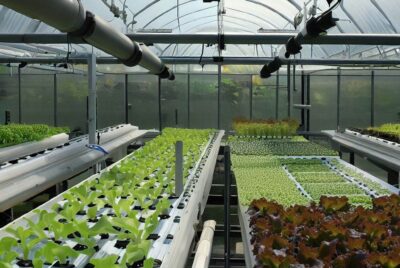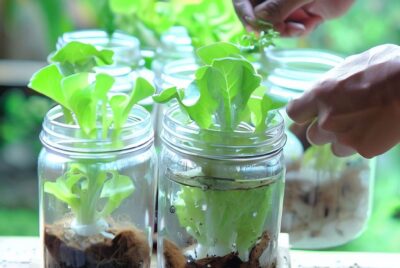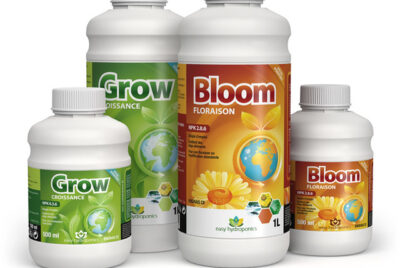Best Hydroponic System
*We may earn a commission for purchases made using our links. Please see our disclosure to learn more.
When it comes to hydroponics, choosing the right system is crucial for the success of your indoor gardening endeavors. With various options available, it can be overwhelming to determine which hydroponic system is the best fit for your needs. In this article, as a knowledgeable advisor, I will guide you through the different types of hydroponic systems, factors to consider when selecting one, and provide helpful suggestions to assist you in making an informed decision.
Which is the best Hydroponic System for you?
Hydroponic systems are designed to cultivate plants without soil, using water and nutrient solutions to nourish the roots directly. Each system employs a unique method for delivering water, nutrients, and oxygen to the plants. Let’s explore some popular hydroponic systems:
1. Nutrient Film Technique (NFT)
The NFT system utilizes a shallow, sloping channel where a thin film of nutrient solution continuously flows. Plants are placed in small baskets, allowing their roots to access the nutrient-rich film. This system is ideal for fast-growing, leafy greens and herbs.
2. Deep Water Culture (DWC)
DWC involves suspending plant roots in a nutrient solution-filled reservoir. Oxygen is supplied to the roots through air stones or diffusers, promoting healthy growth. This system is relatively simple and suitable for beginners.
3. Ebb and Flow (Flood and Drain)
In the ebb and flow system, plants are placed in a tray or container filled with a growing medium. Periodically, the tray is flooded with nutrient solution, which then drains back into the reservoir. This system allows for good aeration and is versatile for various plant types.
4. Drip Irrigation
Drip irrigation involves delivering nutrient solution directly to the base of each plant through a network of tubes and emitters. This system allows for precise control over water and nutrient delivery and is popular for large-scale commercial operations.
Factors to Consider
1. Space and Scale
Evaluate the available space and scale of your indoor garden. Some systems, like NFT or DWC, are suitable for small-scale setups, while others, such as drip irrigation, can accommodate larger growing areas.
2. Water and Nutrient Management
Consider your ability to manage water and nutrient solutions effectively. Systems like NFT and DWC require regular monitoring and adjustment of nutrient levels, pH, and oxygenation. If you prefer a low-maintenance option, ebb and flow systems may be more suitable.
3. Plant Types and Growth Preferences
Different plants have varying growth requirements. Some thrive in shallow, fast-flowing nutrient films (NFT), while others prefer deep-water immersion (DWC). Consider the types of plants you intend to grow and choose a system that aligns with their needs.
4. Experience and Skill Level
Take into account your level of experience with hydroponics. Systems like NFT and DWC are beginner-friendly, requiring minimal setup and maintenance. However, more complex systems like drip irrigation may be better suited for experienced growers who can handle the intricacies involved.
Advantages and Disadvantages
Each hydroponic system has its own set of advantages and disadvantages. Let’s explore some of them:
1. Advantages of NFT
NFT systems provide continuous nutrient flow, ensuring plants receive a consistent supply of water and nutrients. They are space-efficient, require less water compared to other systems, and are suitable for growing leafy greens and herbs.
2. Disadvantages of DWC
DWC systems can be more prone to oxygenation issues if not properly managed. They require regular monitoring to maintain oxygen levels in the nutrient solution, but with proper care, they can produce excellent results.
3. Pros and Cons of Ebb and Flow
Ebb and flow systems allow for flexibility in plant choices and growing media. However, they require careful attention to prevent overflooding or drying out of the growing medium. This system provides good aeration to the roots, promoting healthy growth.
Conclusion
Selecting the best hydroponic system requires careful consideration of various factors, including space, water and nutrient management, plant types, and your experience level. Whether you opt for the simplicity of NFT, the ease of DWC, the versatility of ebb and flow, or the precision of drip irrigation, each system has its own unique advantages and disadvantages. Choose a system that aligns with your specific needs and preferences to set yourself up for successful indoor gardening.
FAQs
1 How much maintenance do hydroponic systems require? A: The level of maintenance varies depending on the system. Some systems, like NFT and DWC, require regular monitoring of nutrient levels and pH, while others, like ebb and flow, require attention to flooding and draining cycles. Overall, hydroponic systems require more frequent monitoring and adjustment compared to traditional soil-based gardening.
2 Can I grow a wide variety of plants in hydroponic systems? A: Yes, hydroponic systems offer the flexibility to grow a wide range of plants, from leafy greens and herbs to fruiting crops and flowers. However, it’s important to choose a system that caters to the specific needs of the plants you intend to grow.
3 Can I reuse the nutrient solution in a hydroponic system? A: Reusing the nutrient solution is possible, but it requires careful monitoring and adjustment of nutrient levels. Over time, nutrient imbalances can occur, so it’s recommended to refresh the nutrient solution periodically for optimal plant growth.
4 Are hydroponic systems more water-efficient than traditional gardening methods? A: Yes, hydroponic systems are generally more water-efficient since water is recirculated within the system. Unlike traditional gardening methods, where water can be lost through evaporation or runoff, hydroponics allows for precise water delivery to the plant roots, minimizing water waste.
5 Can I convert my traditional garden into a hydroponic system? A: Converting a traditional garden into a hydroponic system may require some adjustments and modifications. It’s important to consider factors such as space availability, water and nutrient management, and plant compatibility. Consulting with a hydroponic expert can provide guidance on how to transition your garden successfully.
Note: This article provides general guidance and suggestions. It’s always recommended to research further and consult with experts before setting up a hydroponic system.




